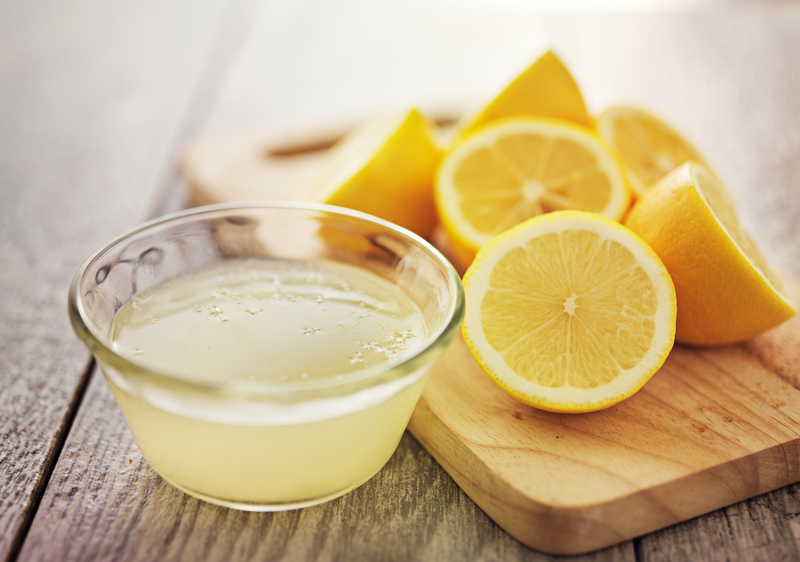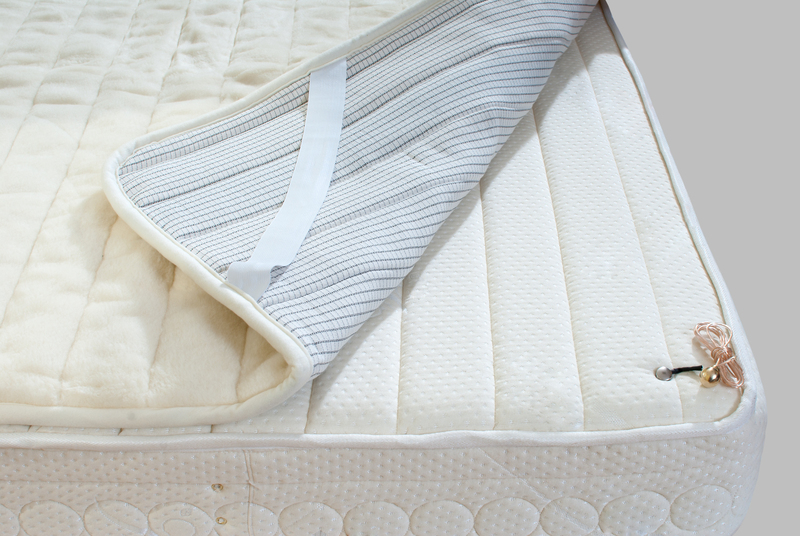Essential Care Guide for Washing Velvet Curtains and Keeping Them Beautiful
Posted on 01/06/2025
Essential Care Guide for Washing Velvet Curtains and Keeping Them Beautiful
Velvet curtains are the epitome of luxury and elegance in home decor. Their sumptuous texture, deep colors, and lustrous sheen add instant sophistication to any space. However, maintaining the beauty of velvet curtains requires special care and attention. Understanding the correct washing methods, maintenance tips, and long-term preservation strategies is essential for ensuring your velvet drapes stay gorgeous for years to come. In this comprehensive care guide, you'll learn everything you need to know about washing velvet curtains and keeping them as stunning as the day you hung them.
Understanding Velvet: Why Special Care Is Needed
Velvet is a distinctive fabric characterized by its dense pile and soft, plush surface. Traditionally made from silk, it can also be found in more affordable blends such as cotton and synthetic fibers. The rich texture that makes velvet so appealing is exactly why it requires unique maintenance.
- Pile Sensitivity: The soft fibers or "pile" can crush or mat easily under pressure or excessive moisture.
- Color Fading: The vibrant dyes used in velvet are prone to fading if not cared for properly.
- Water Spots: Improper washing can result in water stains or streaks on the fabric.
- Stretch and Distortion: Velvet drapes' weight and structure can be lost if not handled judiciously.
Hence, caring for velvet curtains is not just about keeping them clean; it's about preserving their luxury and allure.

Preparatory Steps: Get Your Velvet Curtains Ready for Cleaning
Before you start the cleaning process, it's important to prepare your curtains and cleaning space to minimize the risk of damage.
Check the Manufacturer's Label
Always refer to the care label on your velvet curtains. Some may be machine washable, while others strictly require dry cleaning. Disregarding the manufacturer's guidance can result in irreversible damage.
Test for Colorfastness
- Choose an inconspicuous area of the curtain.
- Dampen a white cloth with lukewarm water.
- Blot (don't rub) the fabric to check if any dye transfers to the cloth.
- If it does, professional dry cleaning is recommended.
Dusting and Pre-Cleaning
Use a soft brush attachment on a vacuum to gently remove loose dust and dirt from the curtain's surface. Regular vacuuming is an essential part of velvet curtain maintenance.
How to Wash Velvet Curtains: Step-by-Step Instructions
The correct washing method for velvet will depend on the type of velvet and the manufacturer's recommendations. Here are the main techniques you can use to clean your velvet curtains:
1. Hand Washing Velvet Curtains
This is often the safest home method, especially for delicate or natural fiber velvet.
- Fill a bathtub or large basin with lukewarm water and add a mild, gentle detergent.
- Submerge the curtains gently, swishing them through the water with light, slow motions. Never wring, twist, or scrub!
- Let them soak for up to 10 minutes.
- Drain the soapy water and refill with clean water for rinsing, repeating until all detergent residue is gone.
Pro tip: Support the curtain fabric with both hands when lifting from water to avoid stretching.
2. Machine Washing Velvet Curtains
Only use this method if the curtain's care label specifically states machine washing is safe.
- Use a gentle or delicate cycle with cold water.
- Select a mild detergent formulated for delicate fabrics.
- Place the curtains in a large mesh laundry bag for extra protection.
- Do not overload the washing machine; wash one panel at a time if possible.
Warning: Avoid any agitation or spin cycles that are too vigorous, as they can crush the velvet pile.
3. Dry Cleaning Velvet Curtains
For silk velvet or any curtains labeled as dry clean only, always trust the professionals. The chemicals and specialized equipment used in dry cleaning are designed to safely clean and refresh velvet without damaging its texture or color.
Drying Velvet Curtains Properly
After washing, proper drying is critical to maintaining the plush pile and preventing fabric distortion.
- Never wring or twist the velvet to remove water. Instead, gently press out excess moisture between two clean, absorbent towels.
- Lay the curtains flat on a clean, dry surface--preferably over towels--to air dry. Avoid directly exposing them to sunlight, which can fade colors and damage fibers.
- Allow the curtains to dry completely before rehanging to prevent mildew or distortion.
- Do not use a tumble dryer.
Tip: To restore the plush nap after drying, use a gentle brush in the direction of the pile.
Steaming and Ironing Velvet Curtains
Velvet's texture makes it susceptible to crushing from a regular iron. However, it often needs help to recover its full, fluffy appearance after washing or if minor wrinkles appear.
- Steaming: The best method for refreshing velvet is to use a handheld steamer. Hold it several inches from the fabric and allow the steam to gently relax the fibers.
- Ironing (if absolutely necessary): Place the velvet face down on a thick towel. Use a low-heat setting and never allow the iron to touch the velvet directly--always use a pressing cloth between the iron and fabric.
Routine Maintenance: Keep Your Velvet Curtains Beautiful Year-Round
Preserving the lush elegance of your velvet drapes is about more than just proper cleaning. Incorporate these regular maintenance tips into your routine:
- Vacuum weekly with a soft brush to prevent dust buildup.
- Rotate the curtains occasionally to ensure even sun exposure and prevent fading on one side.
- Address spills immediately by blotting (never rubbing) with a clean cloth--wet spots left unattended can cause lasting stains.
- For small stains or marks, spot clean with a mild detergent and water mixture using a soft cloth.
- Use heavy-duty curtain rods and hooks to minimize fabric stretching or sagging over time.
Dealing with Pet Hair and Lint
Velvet is prone to attracting pet hair and lint. Use a lint roller or a dampened rubber glove to remove fur and debris from curtain surfaces gently.
Storing Velvet Curtains: Seasonal and Long-Term Care
If you need to take down your velvet curtains for storage, whether for seasonal changes or renovations, follow these steps to prevent crushing, fading, or odors.
- Clean the curtains thoroughly before storage to remove dust, dirt, and potential pests.
- Roll, don't fold, the fabric to avoid permanent creases and pile damage.
- Place in a breathable cotton bag (never plastic) to allow airflow and prevent moisture buildup.
- Store in a cool, dry, and dark location.
Common Mistakes to Avoid When Washing and Caring for Velvet Curtains
Many velvet curtain owners unwittingly damage their investments by making avoidable mistakes:
- Using harsh detergents or bleach, which can degrade fibers and strip color.
- Exposing the fabric to direct sunlight for extended periods during either drying or while hanging.
- Ironing directly on the velvet, causing pile crushed areas.
- Using high-heat in washing or drying cycles, which can warp or shrink velvet.
- Neglecting regular dusting and spot cleaning, allowing dirt to embed deeply.
Frequently Asked Questions about Washing Velvet Curtains
Can I machine wash all types of velvet curtains?
No. Always check the manufacturer's label. While some synthetic or cotton velvets can withstand gentle machine washing, silk or fragile blends should only be professionally dry cleaned.
How often should I wash velvet curtains?
Curtains in high-traffic, dust-prone areas may need a thorough wash every 6-12 months. In between, routine vacuuming and spot cleaning will suffice to maintain their beauty.
Can I use fabric softener on velvet drapes?
No. Fabric softeners may leave residues that dull the natural sheen of velvet and attract more dust.
What should I do if my velvet curtains develop a water spot?
Dab the spot gently with a clean, damp cloth and allow it to air dry. Lightly steam the area to revive the pile. For stubborn marks, consult a professional cleaner.

Professional Cleaning vs. At-Home Methods: Which Is Best for Your Velvet Curtains?
Professional cleaning is your best bet for:
- Silk, vintage, or high-value velvet curtains
- Large or heavily-soiled drapes that are difficult to handle at home
- Ensuring top-quality results without the risk of pile damage or dye bleed
*Hand washing* and *gentle at-home methods* are suitable for:
- Sturdy, modern synthetic or cotton velvet blends labeled as washable
- Routine cleaning and spot treatment between professional services
Conclusion: Keep Your Velvet Curtains Beautiful for Years
With appropriate care and attention, velvet curtains can remain an exquisite feature in your home for decades. Remember to always evaluate the fabric, follow manufacturer's recommendations, wash with caution, and maintain your curtains regularly. With this essential care guide for velvet curtain washing, you can enjoy their spectacular beauty and elegance year after year.
Key Takeaways:
- Always check and follow the care label directions for your velvet curtains and drapes.
- Handle velvet gently--avoid wringing, scrubbing, or using harsh chemicals.
- Opt for professional cleaning for delicate or high-value velvet fabrics.
- Routine maintenance, proper washing methods, and mindful storage will preserve their beauty and longevity.
Treat your velvet window treatments with the care they deserve, and you'll be rewarded with curtains that stand out in both beauty and durability!


